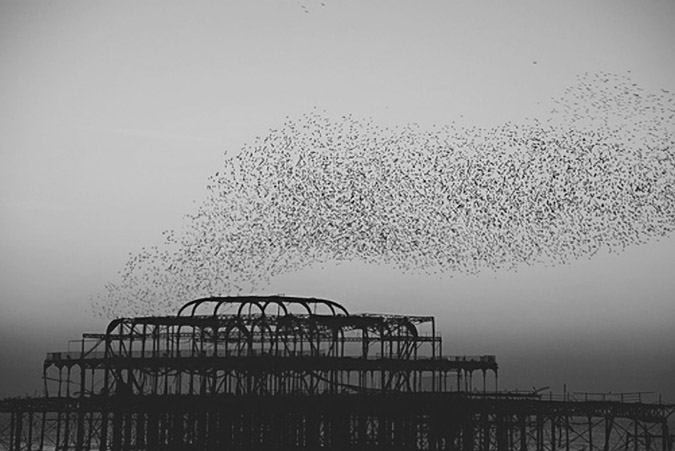From horizontal to diagonal

Photo: howzey on flickr cc Attribution-Noncommercial-No Derivative Works 2.0 Generic
In 1997 I was intoxicated. The ice age was thawing. 1789, 1848, 1871, 1917, 1968… Now it was our turn. We were swarming. And then suddenly… we vanished. Were we just a dream?
In a short article, Network, Swarm, Microstructure, cultural theorist Brian Holmes identifies two preconditions for swarming. First, ‘the existence of a shared horizon – aesthetic, ethical, philosophical and/or metaphysical – which is patiently and deliberately built up over time’, a ‘making worlds’ that enables members of a group to recognise each other. And second, the ‘capacity for temporal coordination at a distance’, via the communication of information and affect. Intoxicated by the discovery of the second, we took the first for granted. Our shared horizon was like a dream. What had induced it?
Firstly, the perceived demise of interstate rivalry seen in the triumph of the neoliberal consensus evidenced by the World Trade Organisation (WTO), agreements on Trade Related Aspects of Intellectual Property Rights (TRIPS), the Multilateral Agreement on Investment (MAI) and so on. The political hype of the time was around corporations ruling the world: the enemy had started to look like a fused bloc. Secondly, a literally millenarian enthusiasm about our new capacity for ‘temporal coordination at a distance’. In the different movements and networks, the most persuasive voices were those most enthralled by the possibilities of this new communication. Thirdly, the amazing story of the Zapatista rebels – and, in particular, Subcomandante Marcos’ poetry – offering a fresh and open concept of collective action.
Back then I naïvely believed that all we needed to do was work on Holmes’s second precondition (‘coordination at a distance’); the first (‘shared horizon’) would look after itself. Provide forums, computers, email lists, opportunities for exchange and joint action, and the thing will just take off by itself: multiplication, not addition. Partly this was a response to the history of the left and the understanding that sclerotised identities and sectarian deformations are among our biggest hindrances, coupled with the idea that taking (especially direct) action together with others was the perfect antidote to it.
Maybe that dream was a premonition come early. In any case the problem of coordination at a distance now seems straightforward – the work rather is around constructing a shared horizon.
One no, many yeses; patchworks of minorities; networks of networks; horizontal exchanges… All these lack punch when the enemy disaggregates itself, when it’s no longer a fused bloc, and when it’s not self-evident how or why we are in this together, or who ‘we’ even are.
French philosopher Alain Badiou associates ‘we’ with that which is most common, most generic, most shared in our situation, but which is at present invisible, uncounted and unnamed. Inside, but excluded. How can we act – here and now – to affirm this common, this generic, this shared aspect of our situation? How, acting locally, is it possible to find a universal address, to demonstrate and enact the equality without which we are simply another interest group? How is it possible to name this common part and paint our horizon with the aesthetic, ethical and metaphysical colours that will render us visible to each other?
Then my question was: how to network local activisms and facilitate global exchange? Now my question is: how to forge a militant universalism and construct a generic will? Organising perhaps not on the horizontal plane, but on the diagonal?
Phil McLeish was an activist with Reclaim the Streets in London in the 1990s. In 1997 his mind was permanently altered by the second Zapatista encuentro – held in the territory of the Spanish state – and subsequent emergence of Peoples’ Global Action. After hiding in fatherhood for a few years, he became involved with Climate Camp in the UK from 2006 onwards
This article is part of the t-10 series from Issue 5 of Turbulence asking, ‘What were you wrong about 10 years ago?‘.


